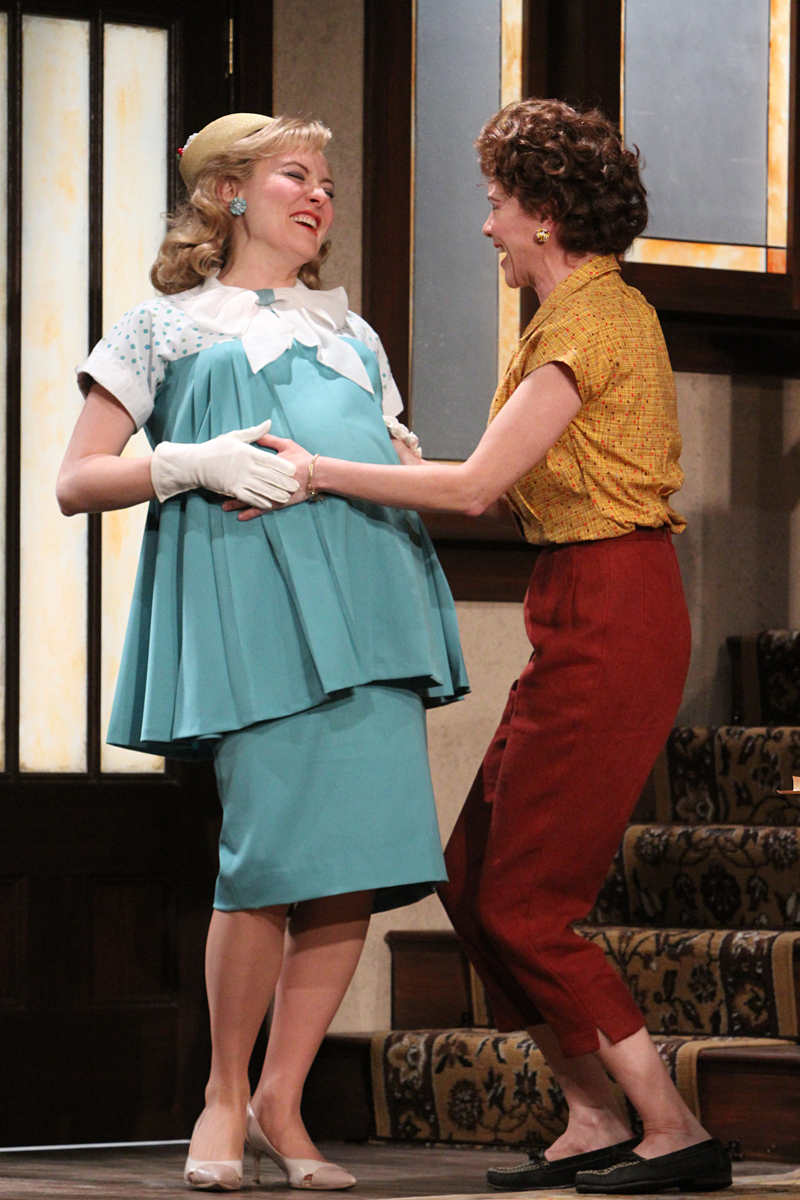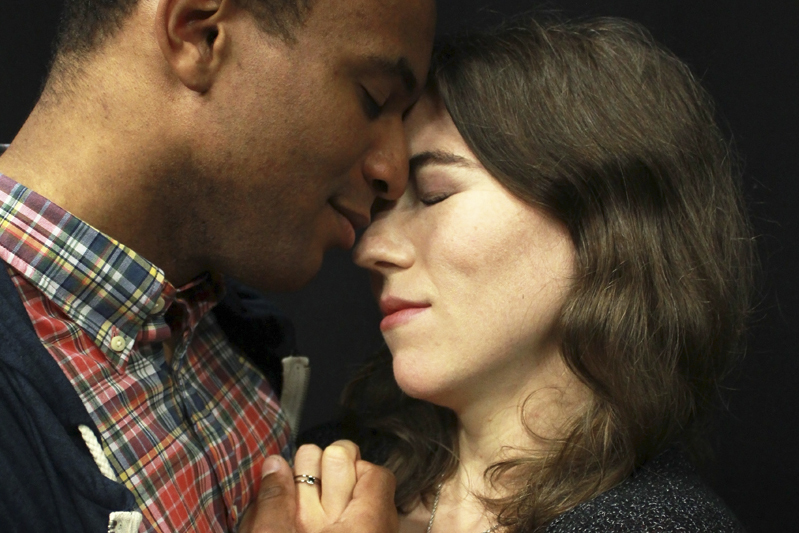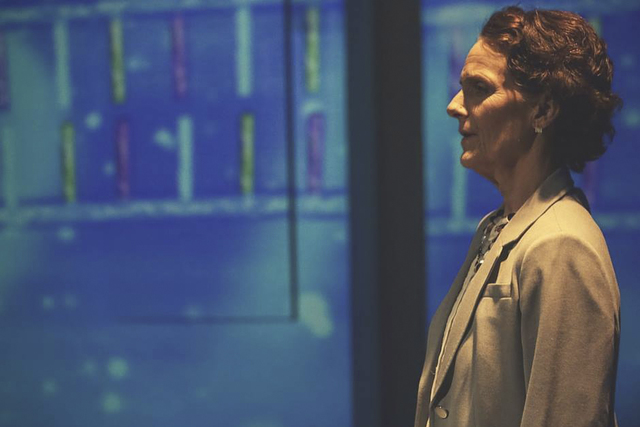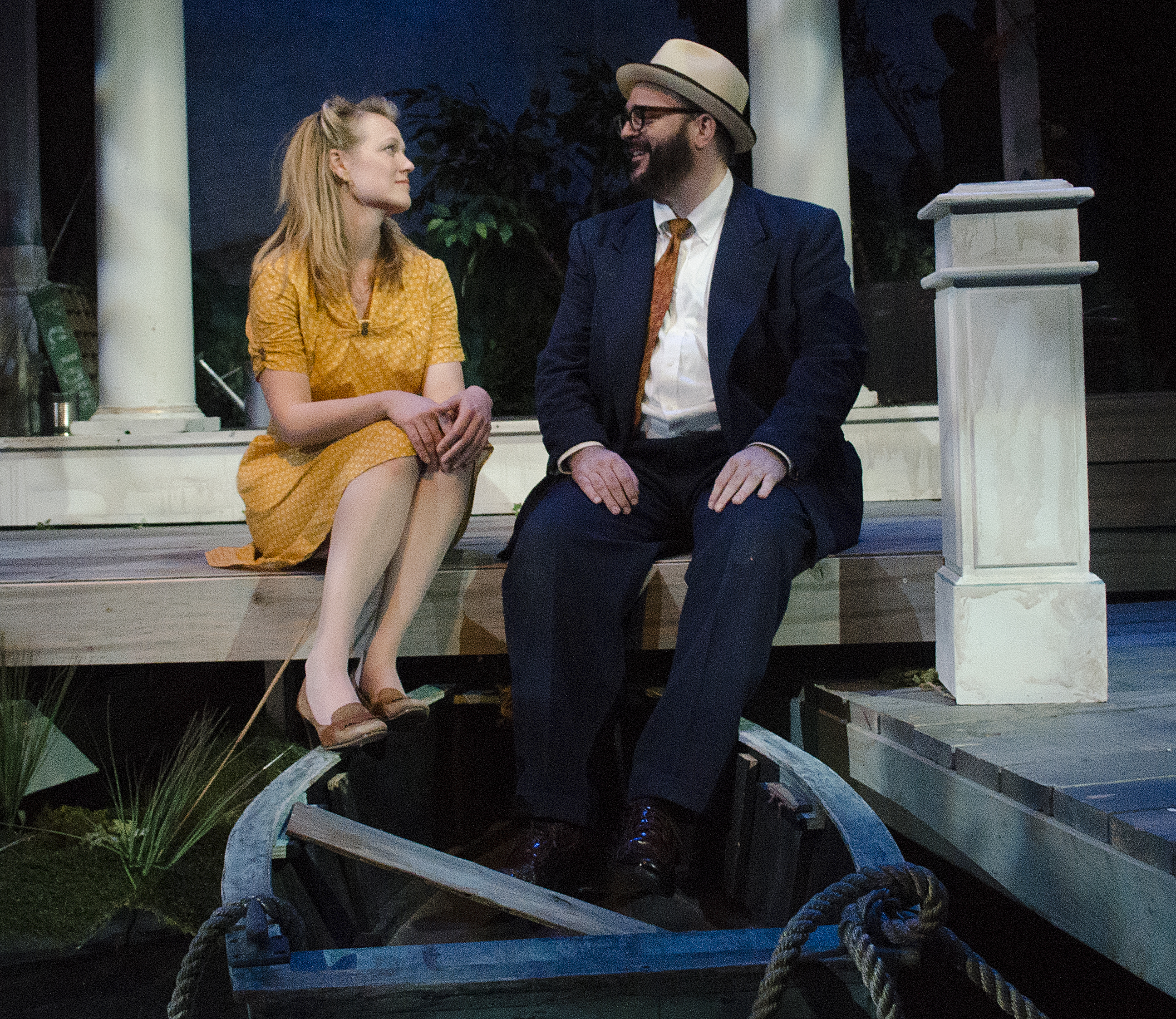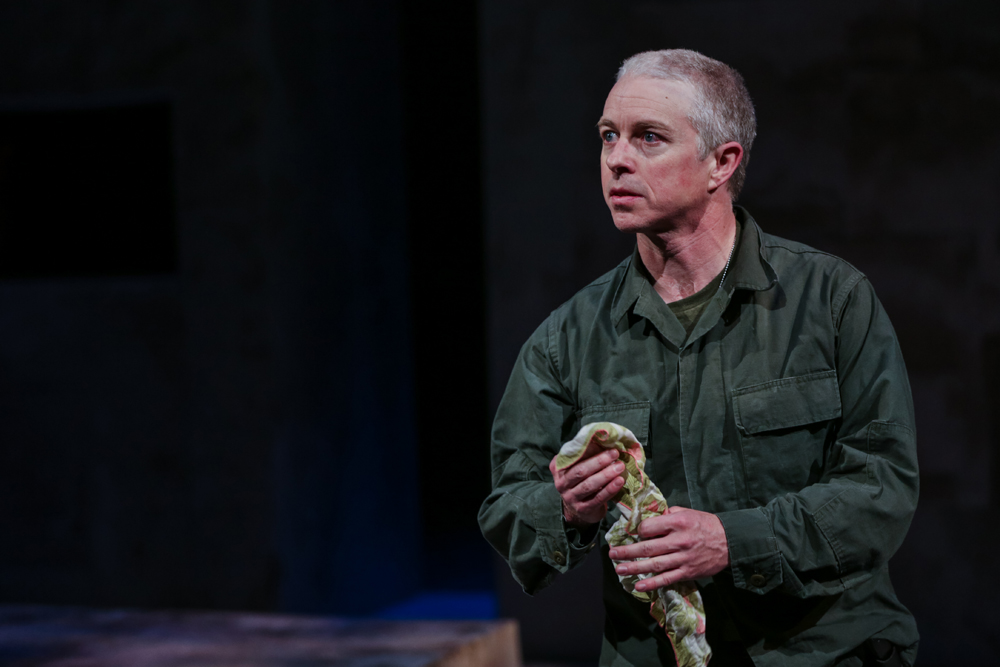Lorraine Hansberry’s iconic 1959 play A Raisin in the Sun ends with the African-American Younger family facing an uncertain future as pioneers in the previously all-white Chicago neighborhood of Clybourne Park. Bruce Norris’ masterfully designed Pulitzer winner has two complementary acts. The first imagines the white family whose house the Youngers bought on the eve of their departure in 1959; the second checks in 50 years later, to see how things worked out. Braden Abraham’s precise directing of a strong local cast highlights the two eras’ symmetries, which kaleidoscopically proliferate and collapse on themselves. During a half-century, Scott Bradley’s set turns from airless craftsman to airy squat house. A trunk carrying sad secrets spurs comedy, then heartbreak. A new influx of yuppier white neighbors hint at the ‘hood’s imperfect transformation. Beneath it all, the spoken and unspoken notions of race and gender grind like tectonic plates.
In 1959 Francine (dignified and real Kim Staunton), the black hired help of sellers Bev and Russ (Suzanne Bouchard and Peter Crook), must endure her employers’ insensitivity and patronizing gestures as they learn that their home has been purchased by a black family (the Youngers, whom we never meet). Bouchard is Mad Men–horrific as she offers Francine an unwanted chafing dish as though it were a jeweled crown. White neighbors, including Hansberry’s racist villain Carl Lindner (Darragh Kennan), drop by to discuss the sale as if Francine and her deliciously undiplomatic husband Albert (Teagle F. Bougere) were invisible. Then, abruptly, all these white property owners interrogate the couple as spokespeople for how black people live and think. Marya Sea Kaminski steals the scene as Carl’s deaf and pregnant wife Betsy, who ecstatically apes Carl’s prejudices without even realizing what she’s endorsing. (Her handicap forces others to say with their hands what they can’t or won’t say with their mouths.)
By 2009, the only character left standing is the now-ravaged house, in which a neighborhood planning meeting is underway. (All the same performers are back, cast in double roles.) Earlier, the fraught subject was integration; now it’s gentrification. Despite the congenial mood, white neighbors—through distractions and narcissistic self-involvement with their phones and assumptions— repeatedly shut out a Younger descendant, Lena (Staunton), who has something to say about tradition. Abraham budgets the emotional escalation beautifully for maximum bang—and for maximum post-curtain reflection. What is a neighborhood? What are we not talking about? What would it mean for the past to be past?
